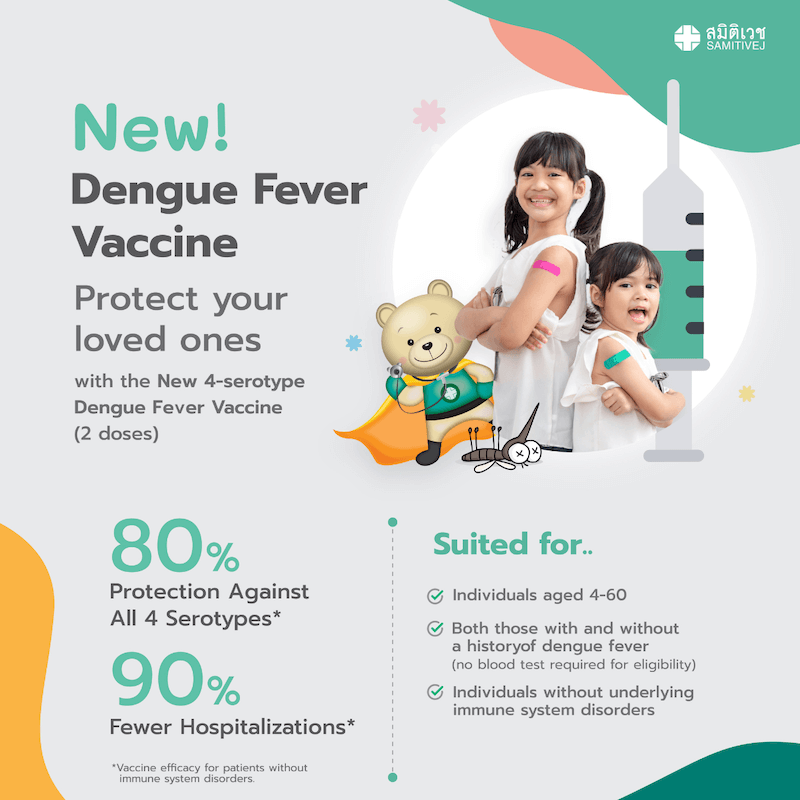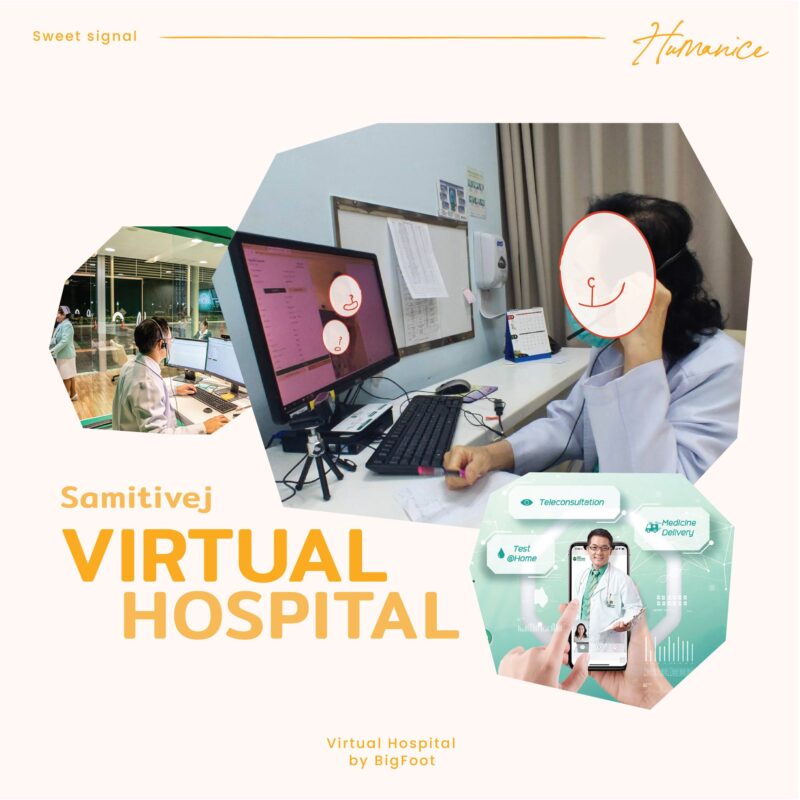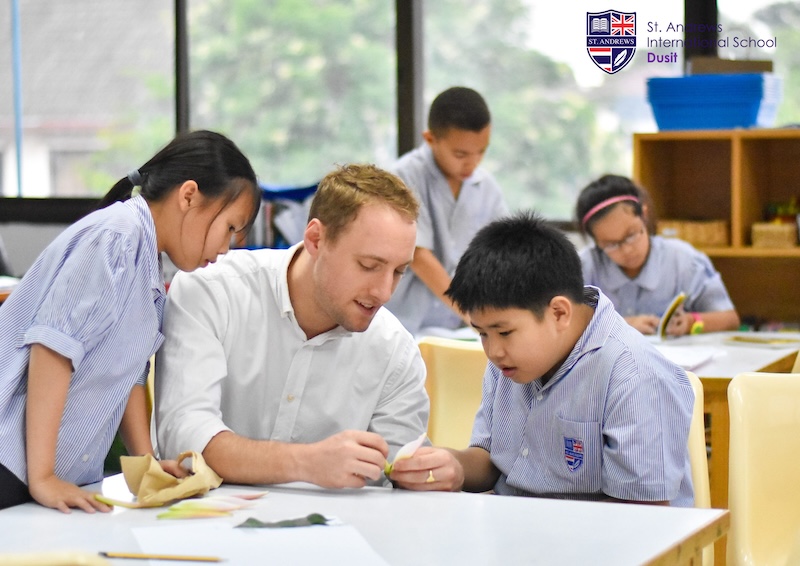Among the comprehensive service offerings of Samitivej Hospitals, a small team of medical specialists have devoted their lives to the emergency aero medical transportation of babies and children, a field fraught with challenges. Nevertheless, upon visiting this unit at Samitivej Srinakarin, we were greeted by the beaming faces of Dr. Hathaitip Chaiprapa and Khun Wallop Jirasiriwatana, Neonatologist and Aeromedical Transport Manager, respectively, of this dedicated team – the first of its kind in Thailand to provide medical assistance in the aircraft during an air evacuation, when suitable treatment is not available locally.
Just for Little Ones
“Children are not small adults. Paediatric patients cannot express themselves to the medical staff, and such cases require a team of paediatric specialists and medical equipment specifically designed for children,” patiently explains Khun Wallop, who also assumes the role of Flight Nurse and Head Trainer on the mobile ICU teams. “We set up the emergency paediatric aero transport unit in 2007, leveraging the strength of Samitivej Srinakarin Children’s Hospital to serve patients in Thailand, Vietnam, Cambodia, Myanmar, Laos – and even as far away as Bangladesh and China.”
Shortly after the program’s inception, the team, consisting of a doctor, neonatal intensive care unit (NICU) or paediatric intensive care unit (PICU) nurse, and a flight nurse, was dispatched to Phuket for a medical evacuation of a baby suffering from a serious respiratory ailment. As their first case, the team quickly learned of the challenges that accompany the job, including those surrounding aviation regulations (private hospitals may not operate their own aircraft due to regulatory and security issues); and the oft-sporadic availability of suitable aircraft, including commercial jets, helicopters, and military and government planes, such as those used for cloud seeding operations by the Ministry of Agriculture. Of course, there was also the web of legal, financial and insurance concerns, as well as the provision of emotional support to the family members.
“When a child becomes sick, it takes a tremendous toll on the whole family. We have to muster the strength to inspire confidence and support the patient’s family,” adds Khun Wallop. “When we first began, we were all excited and ready to go. Over time, the challenges admittedly have dulled the lustre but at the heart of the job, the passion to help people remains.”
Always On Call
Dr. Hathaitip, for example, has been on standby for years. Unable to take a long-deserved holiday, she rises to the challenge whenever she is needed, at the expense of her own family time. She explains, “We can get the call any time. For domestic cases in Thailand, we can be ready to fly in three hours. For other countries, such as Myanmar, it is more complicated, requiring up to six hours of prep time, including arranging the landing permit, interpreters and whatever is needed for the case at hand.” Moreover, Dr. Hathaitip donates her time for charitable cases, such as the evacuation of premature babies and children from stricken areas during the flood crisis in 2011.
In the past seven years, the team has handled about 150 cases, consisting of neonatal patients, infants and children up to 12 years old. The cases mostly involve premature birth and related complications, and infants with respiratory problems. There have also been a handful of pregnant women requiring emergency air evacuation services.
Once the patients arrive in Bangkok, Samitivej’s medical teams in Srinakarin and/or Sukhumvit are ready to support every case, including those with highly specialised needs, such as paediatric neurology, cardiology and orthopaedics, among many other fields.
A Chance for Life
When speaking of their most memorable cases, Dr. Hathaitip and Khun Wallop are overcome with nostalgia; they readily display photos of severely premature babies that they have transported and treated, as well as updated photos of the now happy and healthy toddlers. They also recalled difficult (and ultimately tragic) cases involving a newborn in Chiang Mai with multiple issues, later requiring repatriation to the United States for surgery, due to the family’s financial situation; and a child in Vietnam who fell off a 4-storey building. Both had required emergency aero services to bring them to Bangkok.
“In every case, we have to weigh the risks and benefits before we fly,” says Khun Wallop. “Some cases are particularly tense because of the family’s state of mind – they always want to take the risk, understandably. But we have to go into each situation playing by the rules. After receiving information about a case, our team of medical professionals assesses the symptoms and the patient’s stability, and then determines whether air evacuation is suitable.” Once the air ambulance is deemed to be the best option, the medical team contacts flight operations officers who evaluate weather conditions before take-off.
The cost of emergency aero transport is high at times, there are government resources available to help allay the costs, including support from state-run hospitals and the National Institute of Emergency Medicine, as well as the use of government aircraft, but such services are not always available. “The aircraft are not always safe,” adds Dr. Hathaitip. “We will not get on board a plane or helicopter with an inexperienced pilot.”
After particularly tough days, the team remains upbeat, drawing on past successes for inspiration. Khun Wallop explains, with a smile, “When we are able to give a child a chance at life, this is our reward. Once the mission is on, it has to be ‘Mission Possible’ – nothing else matters and we are simply here to help.”
Looking to Grow
Dr. Hathaitip reflects, “We are happy to have been able to pioneer this service in Thailand. At this moment, we serve all the hospitals in Bangkok, depending on where the transported patient requires treatment. We are also sharing our knowledge on and experience with emergency aero medical transport to local parties who are interested in developing their own capacity, but it is slow going.”
Why is that? For one, extensive qualifications are required, including specialized training on how to use specific medical devices and equipment for air evacuations, which do not interfere with the aircraft’s navigation equipment and can be used above the aircraft’s loud noises. Also, paediatric medical transport is very much a niche market, comprising about 10 percent of the overall caseload, with high investment and expenses.
Moreover, the stress can be overwhelming. “When it comes to paediatric cases, the sensitivity factor is elevated – the eyes of the parents are on you. Everything has to be done correctly, and any small miscommunication can turn into a big risk,” says Khun Wallop. “But once we have the parents’ trust and confidence, things generally become smoother.”
And for the future? The team plans to further develop their services, adding more specialized equipment such as a High Frequency Transport Ventilator. Also, greater marketing efforts will be directed at this emergency air ambulance service.
As the conversation winds down, the two professionals return to reminiscing about the children they have evacuated. “Often, the babies will be in the NICU for months, so they become part of our family,” says Khun Wallop. “They often send photos or come back to visit us. Watching them grow up is fulfilling. It makes me happy to be here.”
For more information, please call +66 (0) 2022 2222.















